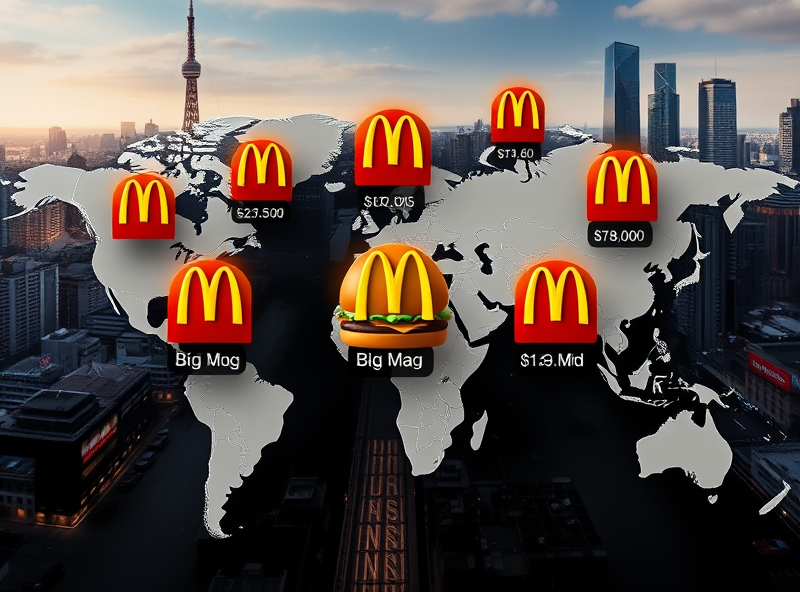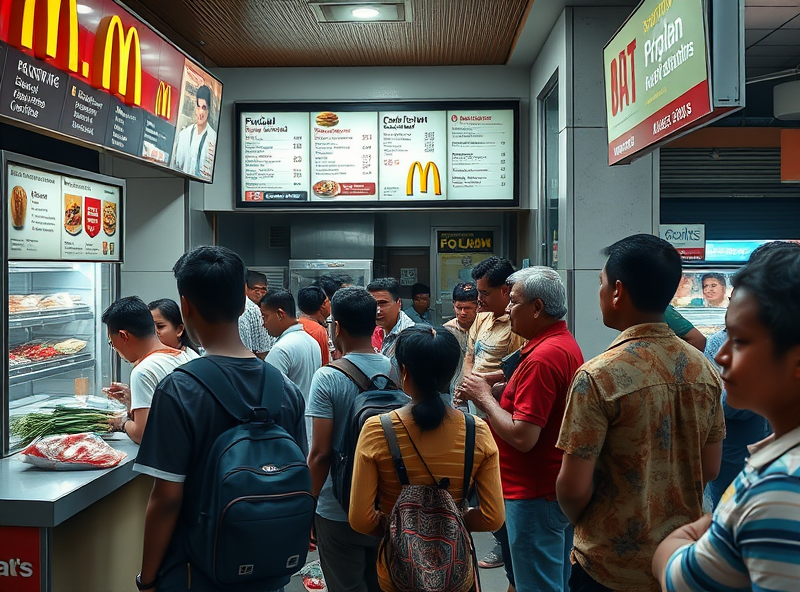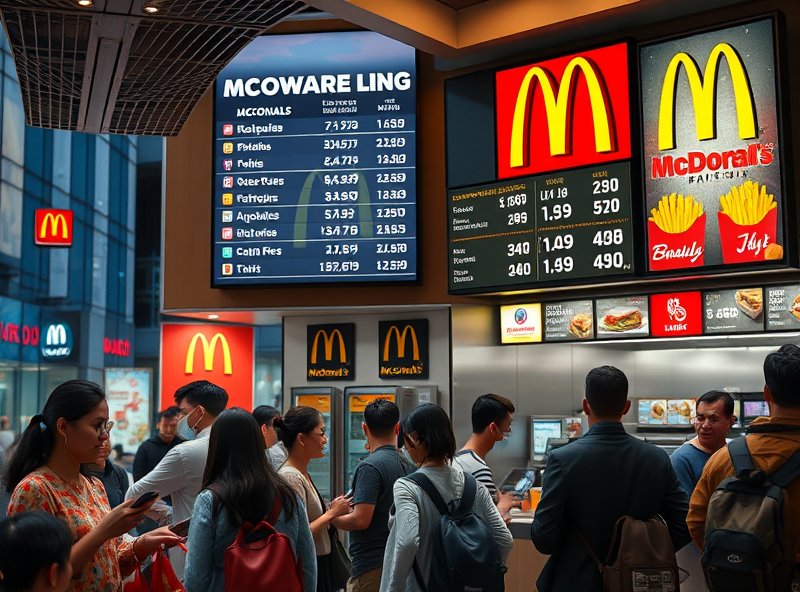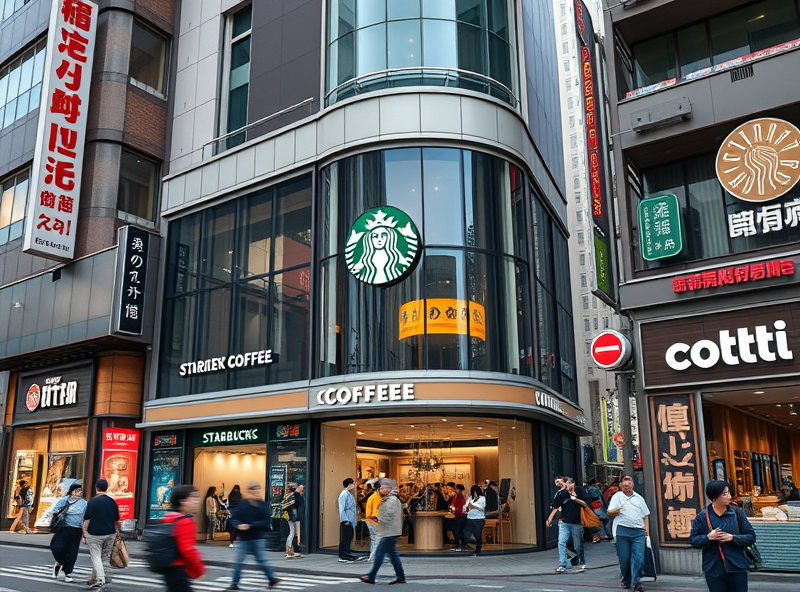
Is McDonald’s Inflation-Proof? Pricing Strategy & Global Performance
Dynamic Pricing and Regional Flexibility in McDonald’s Strategy

In an era of economic uncertainty and fluctuating inflation rates, McDonald’s has demonstrated remarkable resilience through its dynamic pricing and regional flexibility strategies. These approaches are not only helping the company maintain profitability but also offer valuable insights for other global businesses navigating similar challenges.
Dynamic pricing allows McDonald’s to adjust menu prices based on local economic conditions, supply chain costs, and consumer demand. For example, a Big Mac might cost significantly more in Switzerland than in India, reflecting differences in labor costs, rent, and purchasing power. This flexibility helps McDonald’s remain competitive in diverse markets without compromising its brand value.
Additionally, McDonald’s leverages data analytics to monitor regional trends and consumer behavior. This enables the company to introduce localized menu items and promotions that resonate with specific demographics. In Japan, for instance, McDonald’s has successfully launched seasonal offerings like the Teriyaki Burger, tailored to local tastes.
The company also tests price sensitivity in real-time, adjusting prices through mobile apps and digital kiosks. This digital infrastructure not only improves operational efficiency but also provides valuable data for future pricing decisions.
By embracing regional flexibility and real-time pricing strategies, McDonald’s is better equipped to handle inflationary pressures and shifting consumer expectations. For business owners and marketers, this highlights the importance of agility, data-driven decision-making, and cultural sensitivity in global pricing strategies.
For further reading on how global brands adapt to inflation, you can refer to this article by Harvard Business Review: https://hbr.org/2022/07/how-global-brands-can-navigate-inflation
Dynamic Pricing and Regional Flexibility in McDonald’s Strategy

McDonald’s 2025 Q1 financial results revealed a notable divergence: a slight dip in U.S. sales while international markets showed strong growth. This contrast highlights the importance of McDonald’s adaptive pricing strategy and regional flexibility in navigating global economic shifts, including inflation.
In the U.S., McDonald’s experienced a modest decline in same-store sales, attributed to reduced low-income consumer traffic and price sensitivity. Despite raising menu prices to offset inflation and higher labor costs, some customers have started seeking more affordable alternatives. This indicates that even McDonald’s, known for value pricing, must balance affordability with profitability in inflationary environments.
Conversely, international markets, particularly in Europe and Asia, showed resilience and growth. McDonald’s leverages localized pricing strategies that consider regional economic conditions, currency fluctuations, and consumer behavior. For example, in countries like the U.K. and Germany, McDonald’s has introduced value menus and digital promotions tailored to local preferences, helping maintain customer loyalty and traffic.
This regional flexibility is a key strength. McDonald’s uses data-driven insights to adjust pricing and promotions in real time, ensuring relevance and competitiveness. Their digital platforms, including mobile apps and loyalty programs, allow for targeted offers that enhance perceived value without eroding margins.
For investors and business strategists, McDonald’s performance underscores the value of a dynamic, region-specific approach to pricing. It’s a reminder that global brands must remain agile and responsive to local economic realities to thrive amid inflation and shifting consumer behavior.
Source: https://www.cnbc.com/2024/04/30/mcdonalds-mcd-earnings-q1-2024.html
Challenges Facing McDonald’s in a Price-Sensitive Market

As global inflation continues to affect consumer purchasing power, even industry giants like McDonald’s are not immune to the pressures of price-sensitive markets. While McDonald’s has historically been seen as a value-driven brand, recent economic shifts have forced the company to rethink its pricing strategies in various regions.
One of the biggest challenges McDonald’s faces is balancing affordability with profitability. In price-sensitive markets, even a small increase in menu prices can lead to a noticeable drop in customer traffic. Consumers in these regions are highly responsive to price changes, often opting for local alternatives or home-cooked meals when fast food becomes less affordable.
Additionally, McDonald’s must navigate fluctuating costs of raw materials, labor, and logistics. In countries experiencing high inflation or currency devaluation, the cost of importing ingredients or maintaining consistent quality can be significantly higher. This puts pressure on the company to localize sourcing and streamline operations without compromising on quality or brand consistency.
Moreover, competition from local fast-food chains and street vendors—who often have lower overhead costs—intensifies the need for McDonald’s to differentiate itself not just through pricing, but also through customer experience, digital convenience, and menu innovation.
To address these challenges, McDonald’s has been experimenting with dynamic pricing, value menus, and regional promotions. The company is also investing in digital ordering platforms and loyalty programs to enhance customer retention, especially in markets where every dollar counts.
In summary, while McDonald’s global scale offers some insulation against inflation, thriving in price-sensitive markets requires a delicate balance of cost control, localized strategy, and customer-centric innovation.
Source: https://www.wsj.com/articles/mcdonalds-prices-inflation-fast-food-8b6f1e2e
Balancing Inflation With Value: Is McDonald’s Keeping Up?

As inflation continues to affect global economies, many consumers are asking whether McDonald’s can maintain its reputation for affordability while managing rising costs. The answer lies in how the fast-food giant balances price increases with perceived value — a delicate act that determines both customer loyalty and profitability.
McDonald’s has implemented a dynamic pricing strategy that varies by region, allowing the company to respond to local economic conditions. In countries experiencing high inflation, McDonald’s may raise prices slightly while introducing value menus or combo deals to retain budget-conscious customers. This strategy helps them stay competitive without alienating their core customer base.
In the U.S., for example, McDonald’s has increased menu prices by over 10% since 2021, yet continues to attract customers by offering bundled deals and app-exclusive discounts. Globally, the company adjusts its pricing based on local wages, food supply costs, and consumer behavior, which helps them remain resilient even in volatile markets.
Moreover, McDonald’s leverages technology and data analytics to optimize pricing. Their mobile app tracks customer preferences and regional trends, allowing them to offer personalized promotions. This tech-driven approach ensures that even with inflation, customers feel they are getting value for their money.
In essence, McDonald’s isn’t entirely inflation-proof, but its adaptive pricing model and commitment to value help it stay ahead. For consumers, this means that while prices may rise, the brand continues to offer accessible options — a crucial factor in maintaining its global dominance.
Source: https://www.cnbc.com/2023/10/30/mcdonalds-q3-earnings.html







